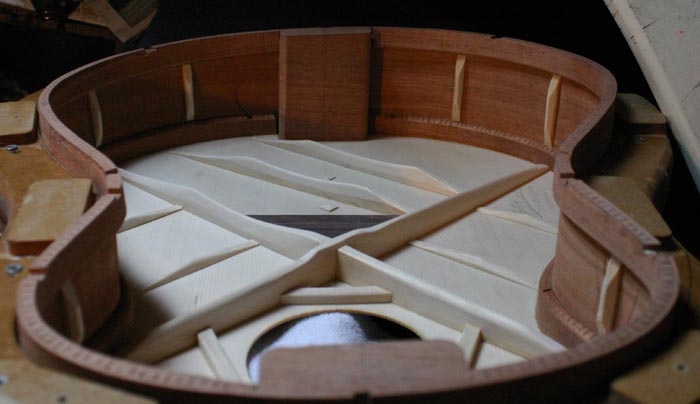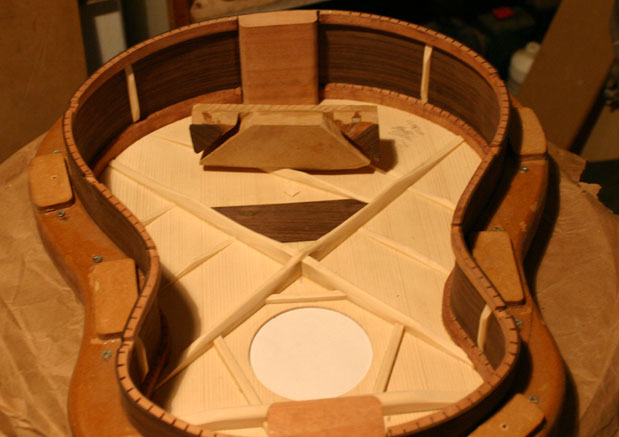[QUOTE=Dave White] [QUOTE=ToddStock] Stiffness of a beam in bending is related to the cube of the depth, so this means that without the cap, one of the braces will be much stiffer than the other (beam depth of 3/8" for one brace and nearly 3/4" for the other...eight times as stiff (minus a bit for material removed next to the soundboard).
[/QUOTE]
Todd,
One thing puzzles me deeply here. Both of the X braces have half of them removed where the X joint is. As I understand it the brace with the part removed next to the top keeps a lot (if not all ) of the stiffness as the top length of the brace isn't cut, but the other brace looses some stiffness as the top length has a gap. But with a snug fit X joint, the other brace now fills in this gap, and when glued in must bring back a lot of the stifness to the brace by making it full height again and effectively bridging the gap.
Putting a cap across the top of the brace must largely be "putting icing on the cake" and extra insurance.
Also the X braces are glued to the top when it is domed and under tension (if a domed top is used), and if the loss of stiffness was such a factor, surely you would have to keep the top firmly in its domed position before the cap is glued on - otherwise the top will pull out of the ideal shape due to the "not stiffened" X brace, so putting the cap on without doing so would be "bolting the stable door after the horse has bolted" so to speak.[/QUOTE]
You've got a point, Todd. But I think adding a small top piece as a bridge across the joint is still a good idea. Here is my take on it.
The gap is, as you say, bridged by the other X-brace, but I see two possible problems. One is that the gap-filling brace has its grain in the wrong direction - wood is MANY times stiffer and stronger along the grain than across it. It's also much less stable with temperature and humidity, so the top may change shape slightly because of that.
But the most important reason may be that glues hold very poorly to end grain. The joint ( between the cut ends of the notch on one brace and the sides of the other) may be solid and stiff for a while, but with time (and even a light blow to the top) the glue joint between the two braces may open up. Try gluing two sticks of spruce together end-to-end, ( or, the end of one to the side of another) and you will see how weak that glue joint is.
Phil
|



 .
.
